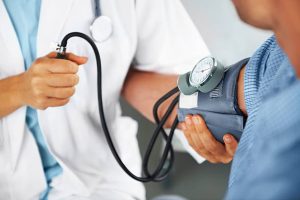Physical Address
A VQ scan, also known as a ventilation-perfusion scan, is a diagnostic procedure done to assess the blood circulation and air distribution in the lungs. It is primarily used to evaluate pulmonary embolism, a condition where there is a blockage in one or more arteries in the lungs. This scan helps in determining the location and extent of the blood clot, which is crucial for planning the appropriate treatment.
In a VQ scan, both ventilation and perfusion scans are performed. The ventilation scan involves breathing in small amounts of radioactive gas, while the perfusion scan involves injecting a small amount of radioactive material into the bloodstream. These radioactive materials emit low-level radiation, which helps in creating detailed pictures of the lungs.
The VQ scan is non-invasive and does not involve any radiation exposure such as X-rays or CT scans. The amount of radiation exposure in a VQ scan is considered to be very small and poses no significant risk to the body. However, it is important to inform the healthcare provider about any previous exposure to radiation or other imaging scans.
During the VQ scan, the patient lies on a nearby scanner, wearing a mask to restrict any external interference. The scanner takes pictures of the lungs, and the data obtained is processed to create detailed images. These images help the healthcare provider in diagnosing any pulmonary abnormalities or complications.
What is it used for
A VQ scan, also known as a ventilation-perfusion scan, is a diagnostic test that is done to assess the blood flow and air circulation in the lungs. It is often used to detect and diagnose conditions such as pulmonary embolism, a blockage in the arteries of the lungs.
During a VQ scan, a small amount of radioactive material is injected into the body, usually through a vein. This material helps to create pictures of the lungs. In some cases, a small mask or device may be placed over the nose or mouth to help with the ventilation part of the test.
The VQ scan involves two parts: the ventilation scan and the perfusion scan. The ventilation scan uses a special scanner that takes pictures of the lungs while the patient breathes in and out. This helps to assess the air circulation in the lungs.
The perfusion scan uses another scanner that takes pictures of the blood flow in the lungs. A radioactive material is injected into the vein and allows the scanner to capture images that show how blood is flowing through the lungs. This helps to assess the blood flow and circulation in the pulmonary arteries.
VQ scans are often recommended by healthcare providers when there is a suspicion of a pulmonary embolism or other conditions that affect the lungs. They are safe and effective diagnostic tests that use radiation, but the amount of radiation used during a VQ scan is small and does not pose a significant risk to the patient’s health.
Why do I need a VQ scan
A VQ scan, which stands for ventilation/perfusion scan, is a medical imaging test that helps doctors evaluate the blood flow and air distribution in your lungs. It is commonly used to diagnose or rule out pulmonary embolism, a condition where a blood clot travels to the lungs and blocks a blood vessel.
A VQ scan involves the use of a small amount of radiation to create pictures of your lungs. During the scan, you will wear a mask and breathe in a radioactive gas called xenon or inhale a small amount of a radioactive substance called technetium labeled macroaggregated albumin (MAA). These radioactive particles will travel in your bloodstream and settle in the capillaries of your lungs.
The VQ scan involves two parts: the ventilation scan and the perfusion scan. The ventilation scan uses the radioactive gas to show how well air is flowing into your lungs. The perfusion scan uses the radioactive substance injected into your bloodstream to show how well blood is flowing through your lungs.
A VQ scan is a safe procedure with minimal exposure to radiation. The radiation dose from the scan is generally low and considered to have no significant impact on your health. However, if you are pregnant or breastfeeding, you should inform your doctor beforehand as there may be potential risks to the fetus or infant.
A VQ scan may be necessary if you have symptoms or risk factors for pulmonary embolism, such as shortness of breath, chest pain, or a history of blood clots. It can help your doctor determine if there is a blockage in your lung blood vessels and guide further treatment.
In addition to diagnosing pulmonary embolism, a VQ scan can also be used to evaluate other lung conditions, such as chronic pulmonary obstructive disease (COPD) or lung cancer. It provides valuable information about the blood flow and air distribution in your lungs, aiding in the diagnosis and treatment planning for these conditions.
In conclusion, a VQ scan is a useful imaging test to evaluate the blood flow and air distribution in your lungs. It is commonly used to diagnose or rule out pulmonary embolism, but it can also provide important information for other lung conditions. The scan involves minimal exposure to radiation and is generally safe for most individuals.
What happens during a VQ scan
A VQ scan, also known as a ventilation-perfusion scan, is a type of medical imaging test that is commonly used to diagnose and evaluate pulmonary embolism. This test involves two parts: the ventilation scan and the perfusion scan.
Ventilation scan
During the ventilation scan, you will be asked to wear a mask and breathe in a radioactive gas or aerosol. This gas or aerosol will travel into your lungs and fill the small airways. As you breathe in and out, the scanner will take pictures to capture the distribution of the gas throughout your lungs. This part of the scan helps to evaluate the airflow within your lungs.
Perfusion scan
The perfusion scan is done after the ventilation scan. During this part of the test, a small amount of radioactive material will be injected into a vein in your arm. This material will travel through your bloodstream and into your lungs, resulting in the production of images that show the blood flow patterns in your lungs. The scanner will capture these pictures to evaluate the perfusion of blood in your lungs.
Both the ventilation and perfusion scans are painless and non-invasive. They involve minimal radiation exposure, which is generally considered safe and unlikely to cause any health problems. After the scans are done, the images will be reviewed by a radiologist who will interpret the results and provide a diagnosis.
If a pulmonary embolism is detected, appropriate treatment options will be discussed and initiated. It is important to follow any instructions given by the healthcare provider to ensure the best possible outcome.
Will I need to do anything to prepare for the test
Before undergoing a VQ scan, there are certain things you may need to do to prepare for the test. Here are some important considerations:
Consultation with your healthcare provider
It is essential that you speak with your pulmonary specialist or healthcare provider about any health concerns or medical conditions you may have before the test. They will be able to provide you with specific guidelines and recommendations based on your individual circumstances.
Avoiding exposure to radiation
A VQ scan involves the use of small amounts of radiation to create images of your lungs. To minimize radiation exposure, it is important to inform your healthcare provider if you are pregnant or breastfeeding, as special precautions may need to be taken in these cases.
Additionally, you should inform your healthcare provider about any previous exposure to radiation, such as recent X-rays or CT scans, as this may affect the interpretation of the VQ scan results.
Wearing a mask
During the VQ scan, you may be required to wear a mask or cover your nose and mouth with a cloth. This is to prevent the spread of any respiratory infections and ensure the safety of both the patient and the medical staff.
No special dietary restrictions
The VQ scan does not require any specific dietary restrictions. You may eat and drink normally before and after the test, unless instructed otherwise by your healthcare provider.
Informing the staff about your health conditions and medications
Before the VQ scan, it is important to inform the medical staff about any health conditions you may have, such as asthma, heart disease, or kidney problems. They should also be aware of any medications you are currently taking, including over-the-counter drugs, herbal supplements, and vitamins. Certain medications may need to be adjusted or temporarily discontinued before the test.
Dressing appropriately
It is recommended to wear comfortable clothing that allows easy access to the chest area, as this is where the VQ scan will be performed. Avoid wearing clothing with metal buttons or zippers, as these may interfere with the scanner’s ability to capture clear images.
Following these guidelines and instructions provided by your healthcare provider will help ensure a smooth and successful VQ scan. Be sure to ask any questions or concerns you may have before the test to fully understand what is expected from you.
Are there any risks to the test
During a VQ Scan, there are minimal risks and it is considered a safe procedure. The test involves the use of small amounts of radioactive material, which poses little to no risk to your health. The radiation exposure from the scans is also very low and similar to that of other routine medical imaging tests.
The amount of radiation received during a VQ scan is even lower than a standard chest X-ray. The scanner used for the test captures pictures of your lungs using low-dose X-rays. These X-rays are targeted to specific areas of your lungs, minimizing the radiation exposure to other parts of your body.
In rare cases, some individuals may have an allergic reaction to the contrast material used during the test. However, the occurrence of such reactions is extremely rare. If you have a history of allergic reactions or any concerns, you should inform your healthcare provider before the test is done.
Overall, the risks associated with a VQ scan are very small compared to the potential benefits of diagnosing and treating conditions such as pulmonary embolism. Your healthcare professional will weigh the risks and benefits before recommending the test, ensuring that it is the best course of action for your specific situation.
What do the results mean
After the VQ scan is done, the results will provide valuable information about the health of your lungs. The main purpose of a VQ scan is to detect a pulmonary embolism, which is a blood clot in the lung. If the scan shows no abnormalities, it means that there is no evidence of a blood clot or other issues with your lungs. This is great news for your overall lung health.
On the other hand, if the scan reveals abnormalities, it may indicate the presence of a pulmonary embolism or other lung problems. In such cases, further evaluation and medical treatment may be required. It is important to consult with your healthcare provider to understand the specific implications of the scan results and the appropriate next steps.
During the scan, you may have received a small amount of radiation exposure from the scanner. However, the benefits of obtaining the necessary information about your lung health generally outweigh the risks of radiation exposure. The radiation received during a VQ scan is considered to be relatively low.
The results of the VQ scan are usually presented in the form of pictures or images. Your healthcare provider will interpret these images to make a diagnosis and determine the appropriate treatment plan, if necessary. These images may show areas of decreased or increased blood flow in the lungs, which can help identify any abnormalities.
In some cases, a VQ scan may be repeated after a certain period of time to monitor the progress of treatment or to check for any changes in the lung condition. Your healthcare provider will guide you on when and if a repeat scan is necessary.
Is there anything else I need to know about a VQ scan
After the VQ scan, it is important to follow any instructions given by your healthcare provider.
What happens during a VQ scan?
During a VQ scan, both a ventilation scan and a perfusion scan are done. The ventilation scan looks at how well air is flowing into your lungs, while the perfusion scan looks at how well blood is flowing through the blood vessels in your lungs. These scans are usually done together to provide a more complete picture of your lung health.
To get the ventilation scan, you will breathe in a small amount of a radioactive substance. This substance is carried to your lungs, where it gives off rays that a scanner can detect. Pictures are taken that show where the radioactive substance has gone in your lungs.
The perfusion scan involves injecting a small amount of a radioactive substance into a vein in your arm. This substance travels through your body and into the blood vessels in your lungs. Pictures are taken to show where the radioactive substance has gone in your lungs.
Does a VQ scan expose me to radiation?
Yes, during a VQ scan, you are exposed to a small amount of radiation. However, the radiation exposure from a VQ scan is generally considered safe and the benefits of getting the scan outweigh the risks. Your healthcare provider will take precautions, such as using a lead mask to protect your body from unnecessary exposure to radiation.
It is important to let your healthcare provider know if you are pregnant or breastfeeding, as certain precautions may need to be taken to ensure the safety of you and your baby.
Based on the results of your VQ scan, your healthcare provider will determine the appropriate treatment plan for you. In some cases, a VQ scan can help diagnose conditions such as pulmonary embolism, and prompt treatment can be started to prevent further complications.









